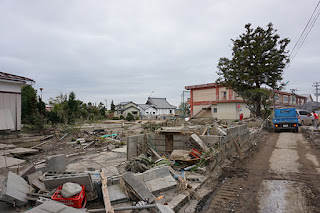The damage situation
Super Typhoon Hagibis, the strongest storm in decades made quite heavy landfall on Japan last Saturday, 12 Oct. It has caused tremendous damage from central to northeast of Japan. The damage is especially significant in Nagano, Tochigi, Saitama, Fukushima, and Miyagi Prefectures.
• Death toll hits 79, with 8 missing and more than 40k houses flooded according to NHK, Japan Broadcasting Corporation, 19 Oct.
• More than 100 embankments broke nationwide according to Asahi newspaper, 17 Oct.
• More than 435,600 homes went without power at its peak according to TEPCO, Tokyo Electric Power Company, and 95,705 homes remain without water nationwide according to NHK, 18 Oct.
 |
| Many houses got completely destroyed and washed away. (Miyagi pref. /18 Oct.) |
It would take a long time for the recovery, and it's crucial to keep
supporting the victims of this typhoon so that they can rebuild their
lives.










